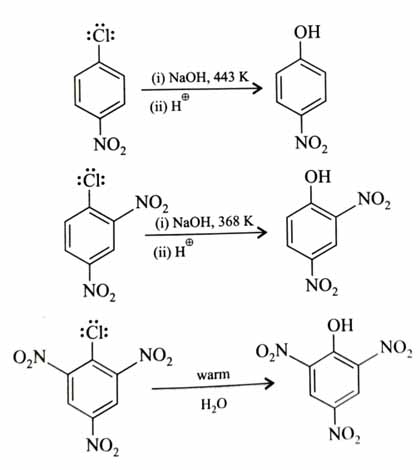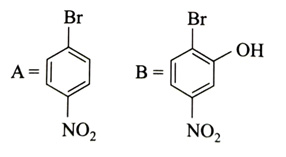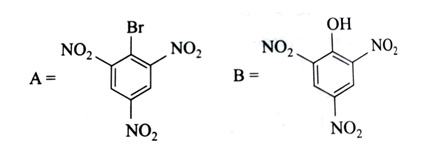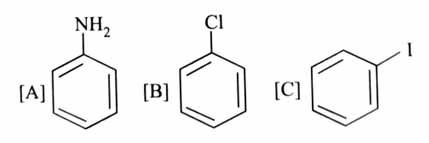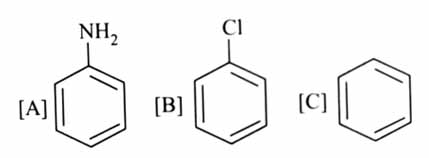Topic Question Set
Q 1
:
Identify A and B in the following reaction sequence. [2024]


(2)
Aryl halides have no tendency to show nucleophilic substitution reaction but in the presence of strong electron withdrawing group such as nitro group these show nucleophilic substitution reactions with ease.
Q 2
:
 [2024]
[2024]
 [2024]
[2024](1)
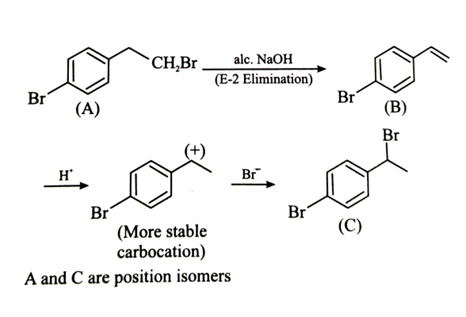
Q 3
:
Identify compound (Z) in the following reaction sequence. [2024]
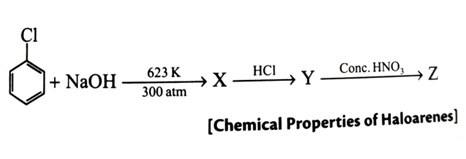

(1)

Q 4
:
Identify [A], [B], and [C], respectively in the following reaction sequence: [2025]


(3)

Q 5
:
Choose the correct set of reagents for the following conversion. [2025]
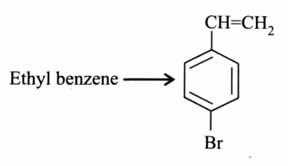

(1)
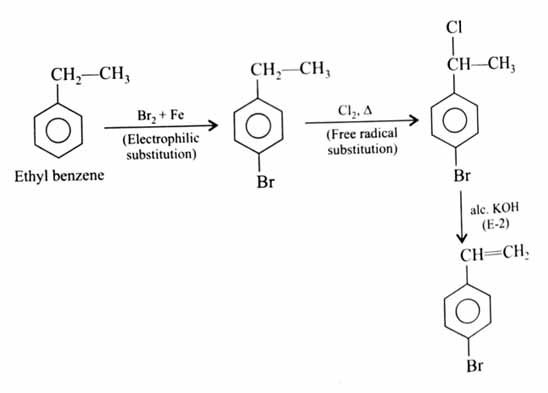
Q 6
:
Match List-I with List-II: [2025]
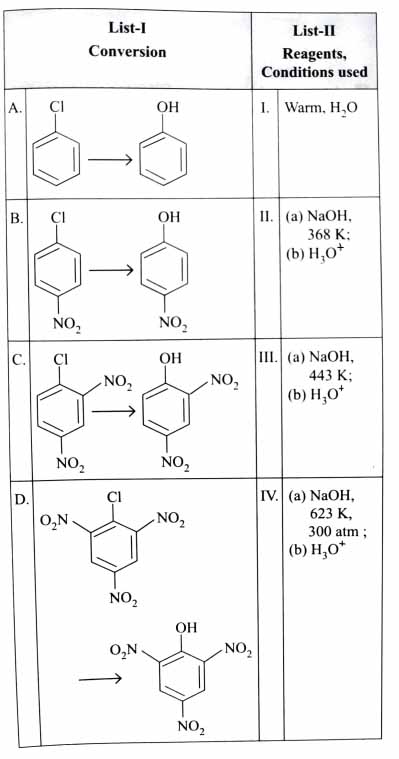
Choose the correct answer from the options given below:

(A)-(II), (B)-(III), (C)-(I), (D)-(IV)
(A)-(III), (B)-(IV), (C)-(II), (D)-(I)
(A)-(IV), (B)-(III), (C)-(II), (D)-(I)
(A)-(IV), (B)-(III), (C)-(I), (D)-(II)
(3)
Chlorobenzene can be converted into phenol by heating in aqueous sodium hydroxide solution at a temperature of 623 K and a pressure of 300 atmospheres.

The presence of an electron withdrawing group (–) at ortho- and para-positions increases the reactivity of haloarenes.
